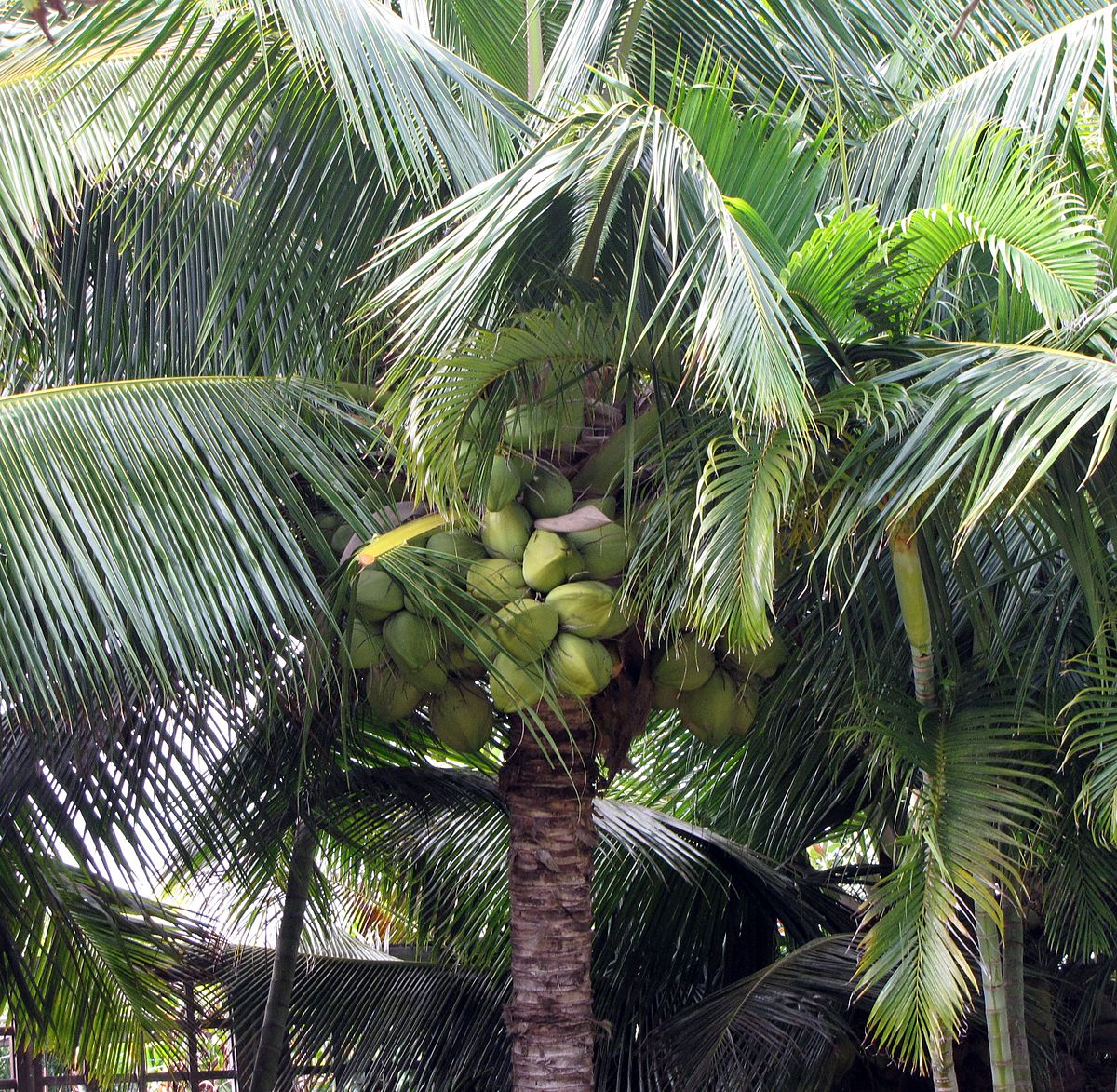The coconut palm (cocos nucifera) is the most common palm tree known by people across the globe. With its signature fruit and beautiful silhouette it is the ideal palm to be seen in any tropical destination. The coconut palm works well in organized and organic landscapes alike. Whether it is flanking a view of the ocean or creating a tunnel to drive under at your residence this palm is versatile and very appealing in a variety of ways.
Before we get into all of the ways that the coconut palm is attractive to tourists and locals alike, a word of caution about the coconuts themselves. With the size of the fruit these coconuts can fall from a height of 40 feet or higher from a full grown palm, but if strategically trimmed once a year you can trim three stages of fruit growth at once to ensure no fruit falls from dangerous heights.
Besides the coconut palm’s aesthetic draw in the landscape, it is also grown all over the world in subtropical regions for the hundreds of uses for the coconuts and coconut related products. The liquid from the coconut, coconut milk, is a popular refreshing and nutritious drink. The mature coconuts can be shredded for cooking and baking along with turning the coconut “meat” into the most famous product; coconut oil, used in cosmetics and cooking.
The coconut is a hardy palm and is one that never fails. When in doubt, choose the coconut palm on an island like Sanibel to create an oasis of comfort only tropical destinations can offer.
This column is a joint effort by all at In The Garden, a Sanibel garden center located at 3889 Sanibel Captiva Road, Sanibel, Florida
